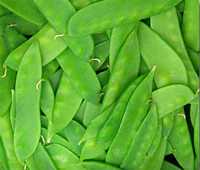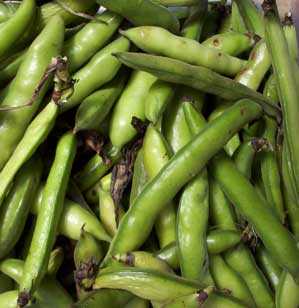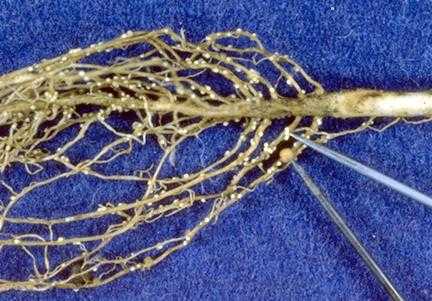This week, Danny and Galit informed me of a new cookie product making its debut, joining the impressive repertoire of their granola and healthy cookies production. The newest cookie is made from granola and berries, organic whole wheat spelt flour, and sweetened with organic agave syrup (no sugar, low sodium and cholesterol-free). Those interested in this or other products may order via the Chubeza order form or directly from Danny and Galit.
_________________________________________________________
Behind every successful vegetable is a legume (successful as well)…
In honor of the green fava bean and the feast of peas over the past few months, I decided to return to a newsletter I wrote four-and-a-half years ago (!), featuring in-depth research on the privileged, wonderful family that these pods belong to – the Legume family. The expression “in-depth” is not accidental. For indeed, there is so much that happens deep underground in this family, close to the roots (which may be the case in every family, true). But let us first get acquainted with the clan: The prestigious legume pedigree belongs to the green bean, pea, fava bean, lubia, soy, lentils, hummus and mash. Lesser-known members of the family are the lupine, vetch, fenugreek (chilbeh), clovers and alfalfa. And the peanuts and carobs, that look nothing like their relatives. This family includes almost 20,000 varied species! In our field, we raise members from the family branch that are eaten in green pods: peas (two species to be elaborated upon), the fava been, the green been, lubia, yard-long bean and green soy (edamame).
The nice thing about this family, when discussing a weekly seasonal box such as ours, is how they interchange throughout the seasons. Sometimes I have a feeling that like on the old kibbutz, some family member is delegated charge for the “work roster,” making detailed charts to vouch that (almost) no week passes without a family representative. To begin the description, we can use the seasonal display of legumes in our Chubeza boxes, commencing at winter’s start with the first pea pods that grow chubby on the bushes (which happened this year at the beginning of November). First comes the sugar pea (aka snow pea or Chinese pea, the big thin one). After her comes the garden pea that loathes the late-summer heat, but is fine with being seeded in November. It ripens in January. (This is the English pea whose pods hold those nice, round, green “Sunfrost-like” peas. The pods are not edible, but should not be cast away. See tips…)
Chinese pea/snow pea:
Garden/English pea:
Next in line are the fava beans that grew alongside the peas over wintertime, and usually ripen at the peak of winter, i.e., just about now.
The peas make return visits to our boxes for a number of rounds, chubby green peas and flat snow peas, and then bid farewell with the heat of May.
Just then the string bean appears! Sowed three months earlier, in February, this bean takes its time growing, due to the cool temperature. The next round of string beans, sowed a month later, will grow faster (a string bean can ripen some 50 days after being sowed). The string bean prefers moderate spring and autumn temperatures, which is why it arrives in our field over two periods. Concurrent to the string bean, the green lubia begins to ripen. We grow a few types of these, some on bushes and others by trellising (on vines). A short time after the first lubia ripens, it’s time for the yard-long bean (a sub-type of the lubia). They appear in our boxes from the month of June and through the summer till autumn.
During the lubia season, the edamame marches proudly into the boxes. This is the green soy pod, sowed together with the string bean, but needing 80-90 days to ripen. We expect our edamame around July-August, so we can enjoy our soy treats, a green snack, during the warm summer nights.
And when the New Year is upon us in Tishrei, we are always happy to add lubia to the boxes, to take an important role in the holiday feast, with its own special blessing. The lubia continue to bear fruit until the cold November temperatures spur their farewells–and on their way out, they meet the string bean coming in for a return appearance. At this point, we have already sowed the peas and fava bean, and a new round of legumes begins.
This description is lacking something, because it only describes what you see in your boxes. But in truth, behind many of your other vegetables, there hides another legume. One that grows in the wintertime, but never appears in your boxes because it is harvested while blooming, before the pods and seeds emerge. This is the fenugreek (chilbeh) that we grow every winter in certain plots of our field to be used as “green manure.” And this is one of the wonderful characteristics of legumes: they know how to “fix nitrogen.”
!!!!#####^^^^^^****?????
Fine, I get it. You would like an explanation in plain English, not in “agriculturalish.” So, here goes: among other things, plants need nitrogen in order to grow. Seventy-eight percent of the air is nitrogen, but animals and plants cannot make use of it because it comes in a composition that is inaccessible to them (N2, while they need it in N3, i.e., the ammonia used to construct amino acids, protein and others). This is where the legumes prove helpful. The roots of these plants go very deep and utilize the nutrients in the lower strata. The roots then grow small nodules of bacteria that work symbiotically with the legumes. These bacteria are able to receive and absorb nitrogen from the air. They take the nitrogen from the air caught between the clumps of earth and turn it into nitrogenic compounds accessible to the plant, which is transferred from the root to the rest of the legume plant. In return, the bacteria take the nutrients that the plant produced via photosynthesis. Thus, we receive a plant chock-full of nitrogen. The legume plant will use some of this nitrogen in order to build the protein in the fruits and seeds it produces, but if we cut it down at the stage of blooming, chop it up and mix it in the earth, it will leave most of the nitrogen in the earth– and a considerable amount of organic material that will greatly improve the earth’s composition and its fertility. This is also why legumes do not need any additional fertilization like the rest of our vegetables. They get by just fine on their own, thank you. (Well, almost on their own, with a little help from some bacterial friends.)
Nitrogen fixing nodules on roots:
We discussed the assistance provided by the legumes to their fellow plants, but the same is true for us living creatures. The nitrogen that became available is converted in the (dry) legume seeds to protein, minerals and other good things, and when we eat them we, too, benefit from all this symbiosis. What do we get? Protein (in various quantities, depending on the different legumes) – legumes are the best protein providers for vegetarians– and also: calcium, iron, and dietary fibers. They contain essential fatty acids (linoleic and linolenic) that are quite beneficial for diabetics (with their low glycolic index), assist in lowering cholesterol and preventing heart disease, and as a gluten-free complex carbohydrate, they are a good carb substitute for celiacs. Green legumes are similar in their nutritional values to green vegetables: they contain vitamins A, B, and C, iron, potassium, and additional minerals and less protein.
And most important- they can be used to prepare delicious food. Legumes have always been an important part of diets across the globe. The type of legume varies in different places: Middle-Easterners eat hummus and the fava bean (ful); Americans (starting with the natives) eat beans of all types (and there are many), the Japanese eat soy. But they all thoroughly enjoy it!
- Green Cooking: Green cooking is blanching green vegetables in boiling salted water for a short period (half-a-minute to five minutes, depending on the vegetable) in order to prepare them for further cooking, while preserving their bright green color. Sometimes green cooking is sufficient in itself to cook the vegetable—like in salads, such as the Nicoise, which calls for blanched green beans. The water must be at boiling! If not, the vegetable will leak its liquids into the water, and its color will quickly fade. The hotter the water, the shorter the cooking.
- When you add fresh green pea pods to vegetable soups, this acts as a sort of spice. You only need a few pods to make the soup taste totally different. Try it! (thanks to Yochai and Noa)
- Despite the suggestion to peel the fava bean (double peel), you can certainly cook and eat fava beans within their pods! See recipes (link below)
- Instead of discarding the empty pods of garden peas or fava bean, freeze them for the next time you make soup stock, then add to the cooking and take advantage of their excellent nutritional components.
May we all have a wintery, green, yummy and filling week! Alon, Melissa, Bat Ami and the Chubeza team, nibbling away at the fields
___________________________
What’s in this Week’s Boxes?
Monday: lettuce, fennel, dill, red beets, cauliflower, arugula, tomatoes, cucumbers, scallions, broccoli, potatoes
In the large box, in addition: peas or fava, radishes, parsley roots, red Russian kale
Wednesday: celeriac or celery, dill or parsley, cucumbers, kohlrabi or fennel, tomatoes, carrots, potatoes, scallions, cauliflowers, lettuce, broccoli or cabbage
In the large box, in addition: red beets, red Russian kale, peas
And there’s more! You can add to your basket a wide, delectable range of additional products from fine small producers of these organic products: granola and cookies, flour, sprouted bread, sprouts, goat cheeses, fruits, honey, crackers. You can learn more about each producer on the Chubeza website. The attached order form includes a detailed listing of the products and their cost. Fill it out, and send it back to us to begin your delivery soon.
_______________________________________
RECIPES FOR PEAS AND FAVA BEANS
Green Peas and Fennel (with thanks to Nomi from Tel Aviv)
-
1 kg. fresh or frozen peas (I use only frozen, cause I eat the fresh ones immediately)
-
3 heads fennel
-
I onion, sliced in small rings
-
1 ½ cups water
-
¼ cup olive oil
-
½ t. turmeric
-
½ t. pepper
-
½ t. salt
-
Opt: ½ kilo meatball mixture
Preparation:
Shell fresh peas. Cut fennel stalks and slice into 8 sections. Sauté onion, add spices and mix. Place fennel on top of onions, then a layer of peas. Add water and cook covered for one to one-and-a-half hours, at a gentle boil. If you opt for meatballs, when the water boils, place meatballs atop the vegetable mixture. A delicate dish, ideal for serving with white rice.
Broccoli and snow peas stir-fry – Rebecca Woods




